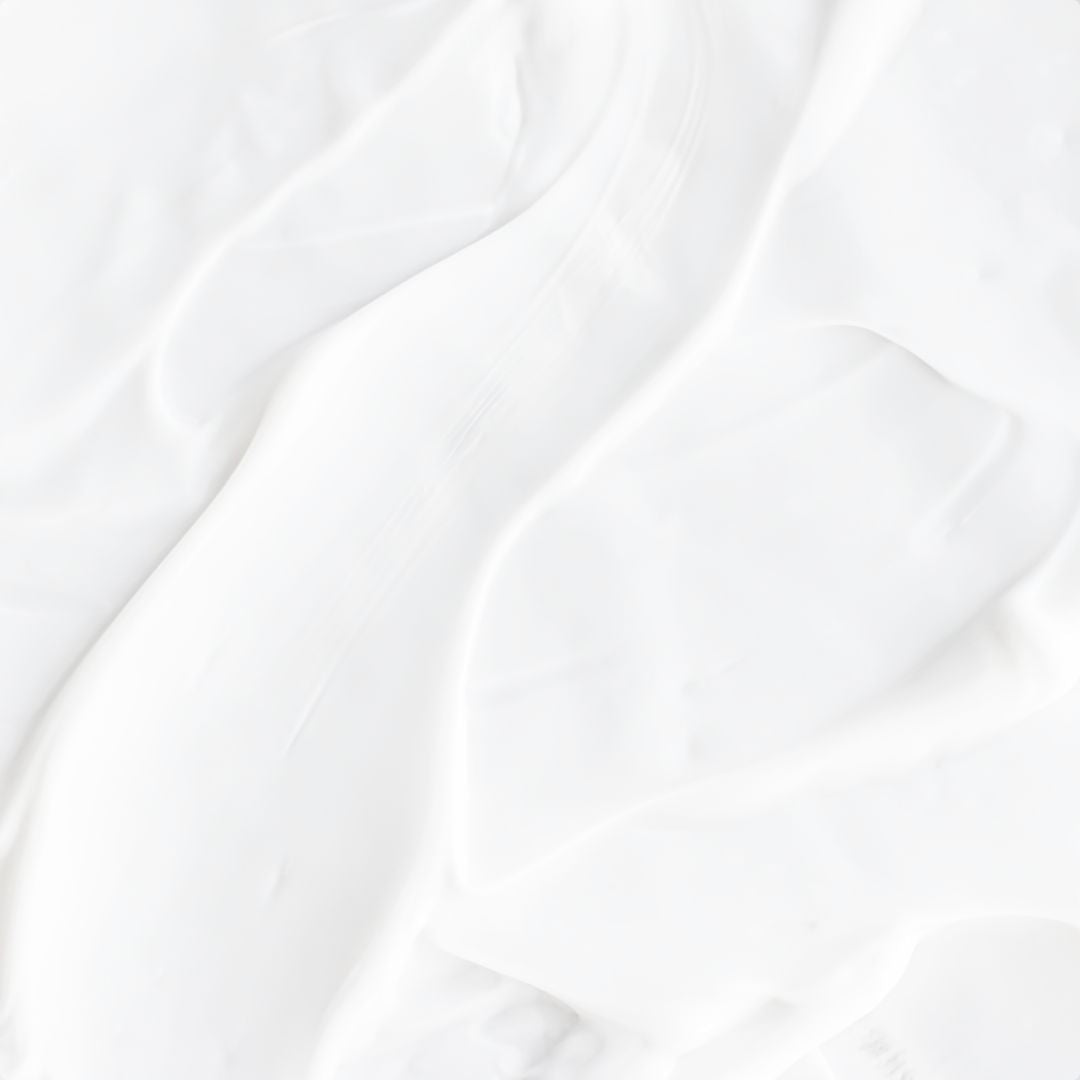Can steroid creams cure atopic eczema or other chronic skin conditions? The short answer is No. To understand why we first need to know what is a topical steroid and how it works.
What is a Topical Steroid? How Does It Work?
Topical steroid or steroid cream is the most commonly prescribed medication for inflammatory skin conditions like eczema (atopic dermatitis, contact dermatitis), psoriasis, etc. Inflammation is the main culprit that causes redness, itching, and other skin irritation. A topical steroid can help to suppress inflammation, thereby controlling flare-ups and providing the skin with temporary relief.
It is a common misconception that topical steroids can cure chronic skin conditions like atopic dermatitis. Unfortunately, while topical steroids can treat the symptoms, they cannot cure existing skin conditions. Topical steroids do not affect the underlying cause of inflammation (i.e. do not treat the root cause of inflammation), which means when discontinued use, the symptoms can recur.
Tip: Topical means "applied directly to a certain part of the skin."
Possible Side Effects Of Topical Steroids
Short courses of topical steroids (less than two weeks) are usually safe and pose no problems. Adverse effects usually arise when topical steroids are used:
- In infants and children
- For prolonged periods or the frequent repetition of short courses of stronger steroids
- At high potency with frequent repetition of short courses
- Over large areas and under occlusion
Generally, the risk of adverse effects from the use of topical steroid medications increases with the potency, amount, and length of time used. Side effects from topical steroids can either be local (affecting a part of the skin) or systemic (affecting the whole person).
Local Side Effects
The most common local side effect is a burning or stinging feeling when first using topical steroids. This usually goes away as the skin becomes used to the medication. Other side effects include stretch marks (striae), bruising, discolouration, thin spidery blood vessels (telangiectasias), and thinning of the skin (skin atrophy). When the skin becomes thinner, it bruises and tears more easily, and the skin barrier function also becomes damaged or impaired.
A healthy skin barrier is supposed to lock in moisture and repel water, all while protecting the body against harmful external factors like pollution, chemicals, and the sun's UV rays. However, having a compromised skin barrier makes the skin more susceptible to transepidermal water loss (TEWL). This is when water (moisture) escapes through the small cracks in the skin structure and into the air.
The skin then becomes dry and more permeable, allowing harmful irritants and allergens to enter easily. When these invaders consistently penetrate the skin barrier, they can trigger chronic inflammation in the skin. Inflammation is what causes itching and other skin irritation, and chronic inflammation can result in a vicious itch-scratch cycle that is hard to break.
In some cases, topical steroids can also worsen or spread an existing skin infection, and trigger or worsen other skin conditions like acne, rosacea, and perioral dermatitis (rashes in the folds of the nose and around the mouth). Some people also develop an allergy to some of the contents in steroid medications, which further irritates their skin and worsens existing inflammation.
Systemic Side Effects
Topical steroids are thought to have limited absorption as compared to oral, inhaled, and intravenous steroids, which are considered to have systemic absorption. However, depending on certain factors, the absorption of topical steroids can vary vastly.
Systemic side effects from the use of topical steroids can include the collection of fluids in the legs, high blood pressure, bone thinning, and Cushing's syndrome. Some people develop eye diseases like glaucoma and cataracts.
Potent topical steroids are also associated with osteoporosis and fractures. Children who are on repeated courses of topical steroids to manage their skin condition can be subjected to growth retardation.
Topical Steroid Withdrawal (TSW)
The prolonged or improper use of topical steroids (especially moderate or potent ones) can sometimes lead to an adverse withdrawal reaction known as topical steroid withdrawal (TSW). When topical steroids are used for long enough, the body becomes dependent on them and the skin can go into shock when suddenly stopping the use of steroids, reducing the medication strength, applying to fewer areas of the body, or applying them less often.
TSW is a debilitating side effect that can take a huge toll on one’s mental and physical health. Some of the symptoms include:
- Red, burning, stinging feeling
- Pus-filled, oozing bumps
- Dry, cracked, itchy skin
- Flaking, shedding, and peeling skin
- Shivering (feeling too cold/hot)
- Skin hypersensitivity (to water, fabrics, etc.)
- Sensitivity to light and/or heat
- Nerve pain (zingers)
- Eye dryness and irritation
- Thin, wrinkling skin (elephant wrinkles)
- Hair loss (head and/or body)
- Insomnia
- Body fatigue
- Swelling in certain areas of the skin
- Depression, anxiety (if withdrawal lasts for a longer period)
It can take some time for the body to adjust to being off of topical steroids. Depending on the individual, some people may have mild symptoms that clear up after a short while, but for others, they may be very severe and last a very long time.
How to Use Topical Steroids Safely To Avoid Side Effects?
Generally, it is good to avoid the unnecessary use of topical steroids when it comes to mild or minor skin irritations.
Topical steroids should only be used when necessary. For instance, it can help manage eczema flare-ups, but proper instruction is key to avoiding adverse effects.
Your doctor should help to create a safe and effective treatment plan. Follow the recommended treatment duration (including how to safely stop or transition off the use of steroids) and find out what is the strength and dosage of the topical steroids prescription.
Topical steroids can be prescribed by several different doctors at the same time without being reconciled by each prescribing doctor, and sometimes, you may even be simultaneously prescribed other steroid medications (e.g. oral steroids). Using multiple steroids concurrently has a cumulative effect, so always make sure to know exactly what your prescriptions are before using them altogether.
Duration
Topical steroids are designed to be used for the sudden onset of acute (short-term) skin flare-ups that typically last a few days or weeks. It is not meant to be relied upon as a long-term treatment, especially without breaks.
According to research, steroid medications are NOT more effective when used twice or multiple times a day. Applying a thin layer of topical steroids just once a day is often enough.
As a treatment, topical steroids should be used for no longer than 3 days or 2 weeks at a time, depending on how potent the medication is.
Topical Steroids Potency Chart
Topical steroids are divided into 7 classes based on their strength (potency). In general, use topical steroids at the lowest potency possible to control the condition. Children below the age of 12 should stick to mild steroids.
Take a look below at some examples of the different topical steroids and the class they belong to:
- Class 1 (Super Potent) 0.05% Clobetasol Propionate, etc
- Class 2 (Potent) 0.05% Diflorasone Diacetate, etc
- Class 3 (Upper Mid-strength) 0.05% Fluocinonide, etc ⠀
- Class 4 (Mid-strength) 0.1% Clocortolone Pivalate, etc ⠀
- Class 5 (Lower Mid-strength) 0.05% Fluticasone Propionate, etc ⠀
- Class 6 (Mild) 0.05% Alclometasone Dipropionate, etc ⠀
- Class 7 (Least Potent) 1%, 2.5% Hydrocortisone
Did You Know: Class 1 (super potent) topical steroids are up to 600 times as potent as Class 7 (least potent) steroids?
Topical Steroids Vehicles
Topical steroids also come in different vehicles that can affect their potency. Generally, the thicker and oilier a topical steroid is (e.g. ointment), the more quickly it absorbs. Below are some of the most commonly used vehicles:
Ointment (Petroleum-based):
- Most thick, potent preparation base (due to most occlusion)
- Often used on thick, dry, itchy plaques (thickened skin)
-
Not recommended on armpits, groin, the groove between buttocks, and oozing or hairy areas
Cream:
- Less potent than ointments (due to less occlusion)
- Certain preservatives sometimes cause allergic contact dermatitis
-
Often used on areas with skin folds like the armpits, groin, and the groove between buttocks
Lotion:
- Least potent out of the three vehicles (due to the least occlusion)
- Spread and penetrate the skin most easily to leave minimal residue
- Often used on oozing areas of skin and hairy areas
Fingertip Units (FTUs)
Besides knowing how long (duration) to be using topical steroids, and the different strengths and types of vehicles they come in, it is also very important to accurately measure the amount (dosage) of steroid medication to minimise its potential side effects.
A common and convenient way to do so is using fingertip units (FTUs). An FTU is the amount of topical steroid needed to squeeze out a line from the tip of an adult finger to the first crease of the finger, assuming it is a standard tube with a 5 mm nozzle. One FTU (about 500mg) should be enough to treat an area of skin that is twice the size of the flat of an adult's hand with the fingers together.
For adults, the recommended FTUs to be applied in a single dose are:
- 0.5 FTU for genitals
- 1 FTU for hands, elbows, and knees
- 1.5 FTUs for the feet, including the soles
- 2.5 FTUs for the face and neck
- 3 FTUs for the scalp
- 4 FTUs for a hand and arm together, or the buttocks
-
8 FTUs for the legs, including the foot, chest or back
The FTU can also be used in children. The doctor will usually advise on the recommended FTUs depending on their age.
Pay extra attention when treating large areas of the body as it allows for greater absorption. Especially for infants and very young children, who have thinner skin and a greater body surface area-to-weight ratio which makes them less able to metabolise steroids quickly and adequately.
Besides a person's age, the recommended dosage usually also depends on what part of the body is being treated, and how the medication is being applied.
Skin thickness and Condition
Thin skin absorbs more steroids than thick skin and in general, very young children and the elderly have thinner skin.
Also, certain parts of the body such as the face, eyelids, and genitals, have thinner skin. These areas are usually more sensitive to the effects of topical steroids as compared to thick-skinned areas like the palms of the hands and the soles of the feet.
There is also more steroid absorption on areas where the skin rubs together (armpits, below the breasts, and between the thighs or buttocks) and on raw, cracked, open skin.
On top of that, the skin can become thinner with high potency or long-term steroid use, or both.
Topical Steroids Application
Topical steroids should only be applied to affected areas of the skin, applied in the direction the hair grows.
When using topical steroids in conjunction with moisturisers (skin barrier cream), it is recommended to apply the moisturiser first, then wait about 15-30 minutes for it to fully absorb before applying the topical steroids. By applying steroids after a moisturiser, it can help to prevent the medication from being transferred to areas that do not require treatment.
Bear in mind that topical steroids absorb more on damp skin than on dry skin. It penetrates even further when the skin is covered by tight-fitting clothes, plastic wraps, bandages, or other occlusion methods after applying the steroids. There are higher chances of steroid-related adverse effects from prolonged occlusion because of increased absorption.
Always avoid occlusion methods on areas with skin folds (groin) or the face as they can cause irritation, infection, and even folliculitis (inflamed hair follicles).
What Other Ways To Control My Eczema Flare-ups?
A non-irritating moisturiser or skin barrier cream with beneficial lipids and ceramides can help to form a protective layer on your skin, sealing moisture in the skin while keeping out harmful impurities. This allows eczema skin to heal, the skin becomes more resilient and symptoms like dryness, redness, burning, and itching gradually diminish.
A good rule of thumb is to moisturise your skin every time it is subjected to water. This means whenever you use water (with or without a cleanser) on any part of the body, you need to make it a habit to apply a moisturiser right after.
The daily use of a good, reliable skin barrier moisturiser can help you to avoid over-reliance on topical steroids and steroid-related side effects in the long run.
References:
Dhar S, Seth J, Parikh D. Systemic side-effects of topical corticosteroids. Indian J Dermatol. 2014 Sep;59(5):460-4. doi: 10.4103/0019-5154.139874. PMID: 25284850; PMCID: PMC4171913.




